Ivan Kirillov: The Plein Air Artist
- artamour

- Dec 10, 2021
- 5 min read

Born in 1976 in Penza, Kirillov Ivan Borisovich graduated from a vocational school as a Master of Folk Crafts (1994) and later graduated with honours from the Penza Art School (1999). In 2006, he graduated from the Russian Academy of Painting, Sculpture and Architecture and was admitted to the Union of Artists of Russia in 2007. In 2011, he created an educational exhibition project "Russian Palette" on the basis of his works and a personal collection of ancient folk costumes. Travelling exhibitions of the project were held in more than 40 cities of Russia. Ivan Kirillov's works are in numerous private collections around the world, including Russia, Australia, America, Germany, China, Norway, Montenegro, India, and France.

1. When did you decide and what prompted you to become an artist? Please give a brief account of your challenges and struggles in your journey as an artist. Any role models?
KIB: I loved to draw since childhood, like all children, but maybe a little more than the others. As a child, I often played the role of "the artist"— I enacted how the artist comes to the client and simulated various dialogues between them. But my path to painting was not straightforward since it was not a goal since childhood. I studied to be an architect, a master of decorative crafts, and even a mountain tourism instructor. And only later, at a mature age, did I join an art school, and subsequently a painting academy.
The difficulties of artists all over the world, I think, are similar. But we still continue to create and believe in success in the future.
Рисовать я любил с самого детства, как все дети, но, может быть, немного больше. Ребенком я часто играл «в художника» - изображал, как художник приходит к заказчику и моделировал различные диалоги между ними. Но мой путь к живописи не был прямым, это не было целью с самого детства. Я учился и на архитектора, и мастера декоративных промыслов, и даже на инструктора горного туризма. И только уже в зрелом возрасте поступил в художественное училище, а потом в академию живописи.
Трудности у художников всего мира, я думаю, схожие. Но мы всё равно продолжаем творить и верим в успех в будущем.
2. What art projects are you working on currently? What is your inspiration or motivation for this?
KIB: At the moment, I paint most of my work live (plein air). It is about nature and cityscapes. I’m taking a break from my previous projects which were related to the genre and now painting everyday scenes from the history of the peoples of Russia. Working from nature, I think, is part of the artist's mission in this world. People see the artist's attention to everyday, mundane things and begin to understand their value and rethink their attitude to the world around them.
Charcoal portraits
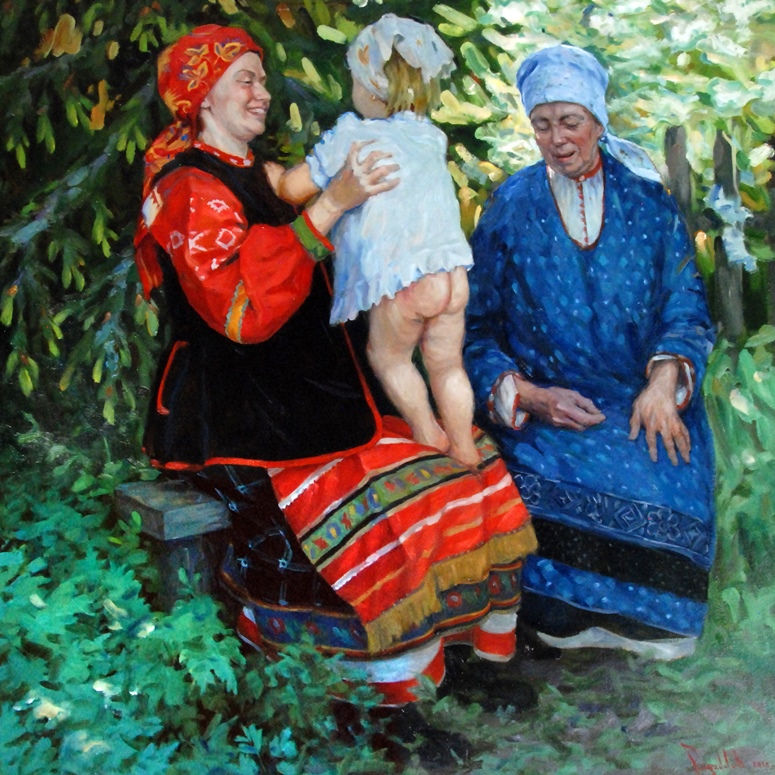




Oil on canvas paintings
'Russian Palette' exhibition (the photographs are from various editions)
В данный момент я большую часть работ пишу с натуры. Это природа и городской пейзаж. Отдыхаю от предыдущих проектов связанных с жанровыми и бытовыми сценами из истории народов России. Работа с натуры, я думаю, это часть миссии художника в этом мире. Люди видят внимание художника к обыденным вещам и начинают понимать их ценность, переосмысливать свое отношение к окружающему миру.
3. Contemporary art has become very diverse and multidisciplinary in the last few decades. Do you welcome this trend? Is this trend part of your art practice?
KIB: I think the division of art into "modern" and "traditional" is somewhat far-fetched. Art based on tradition is no less modern than experimentation and innovation. Traditional art also does not stand still; it develops, it is perfectly visible to any specialist. And contemporary art, in turn, cannot be divorced from history, philosophy, and the creative experience of previous times. But both of them are a response to the challenges of the times.
Я считаю разделение искусства на «современное» и «традиционное» несколько надуманным. Искусство опирающееся на традиции не менее современно, чем эксперименты и новации. Традиционное искусство так же не может стоять на месте, оно развивается, это прекрасно видно любому специалисту. А современное искусство, в свою очередь, не может быть оторвано от истории, философии, творческого опыта предшествующих времен. Но и то и другое откликается на вызовы времени.
4. Does art have a social purpose or is it more about self-expression?
KIB: I see no conflict between self-expression and socially relevant art. Artists can express themselves and at the same time react to the problems of our time. They can devote themselves to a social poster, draw the attention of their contemporaries to pressing problems, but do it creatively. Pictures written on a seemingly acute social theme of today can suddenly become relevant for all time, go beyond the present day and enter eternity, because the problems of humanity are the same at all times.
Я не вижу конфликта между самовыражением и социальным искусством. Художник может самовыражаться и одновременно реагировать на проблемы современности. Он может посвятить себя социальному плакату, обращать внимание современников на насущные проблемы, но делать это творчески. Картины, написанные, казалось бы, на острую социальную тему сегодняшнего дня могут неожиданно стать актуальными на все времена, выйти за рамки сегодняшнего дня и войти в вечность, потому что проблемы человечества во все времена одинаковые.
5. Where do you create your art (workplace/studio)? What is your process?
KIB: Most of the time I paint surrounded by nature. At the moment I am experiencing one of the standard/common difficulties for artists around the world – finding a new studio. Yes, we often have to face such a problem if we do not have our own workshop/studio. Moving is part of our life.







Чаще всего я рисую на природе. В данный момент я испытываю одну из стандартных сложностей для художников всего мира – поиск новой мастерской. Да, нам часто приходится сталкиваться с такой проблемой, если нет собственной мастерской. Переезды это часть нашей жизни.
6. To what extent will the world of art change in the post-Covid period – both in terms of what is created as also the business of art?
KIB: Covid hit the exhibition activities hard. All traveling exhibitions were closed. Consequently, this affected the commercial component as well. If earlier the main income was generated by exhibitions, then during this period artists had to sell the works themselves, which was not necessary earlier. And, of course, we are all still "in the jump" and it is not known what the landing will be like. In any case, this is not a reason to give up creativity and some kind of life principles.
Ковид сильно ударил по выставочной деятельности. Были свёрнуты все передвижные выставки. Соответственно это сказалось и на коммерческой составляющей. Если раньше основной доход приносили выставки, то в этот период пришлось продавать сами работы, чего можно было избежать раньше. И, конечно, все мы пока ещё «в прыжке» и неизвестно, каково будет приземление.
Во всяком случае это не повод, что бы отказываться от творчества и каких то жизненных принципов.
7. Tell us about any other interest you may have besides your art practice. Does it get reflected
in your art?
KIB: Firstly, my work reflects an interest in national traditions, in folk costumes, in history. I’ve one of the largest collections of ancient folk costumes in the country. I’ve also done several joint exhibitions where old costumes and my work have been presented.
The second hobby is of course travelling. You don't have to go somewhere far away, but the new places you see always provide a clue to a deeper understanding of familiar places.
В первую очередь на моём творчестве отразился интерес к национальным традициям, к народному костюму, к истории. У меня одна из крупнейших в стране коллекций старинного народного костюма. Я много делал совместных выставок, где представлены старинные костюмы и мои работы.
Второе увлечение, это, конечно, путешествия. Не обязательно отправляться куда то далеко, но новые увиденные места всегда дают ключ к более глубокому пониманию привычных мест.
(All images are courtesy of the artist, Kirillov Ivan Borisovich)
The artamour questionnaire is a regular series of interviews with visual artists across disciplines, who share their views about art, their practice and their worldview on a common questionnaire template. Like, comment, share and subscribe to stay updated.


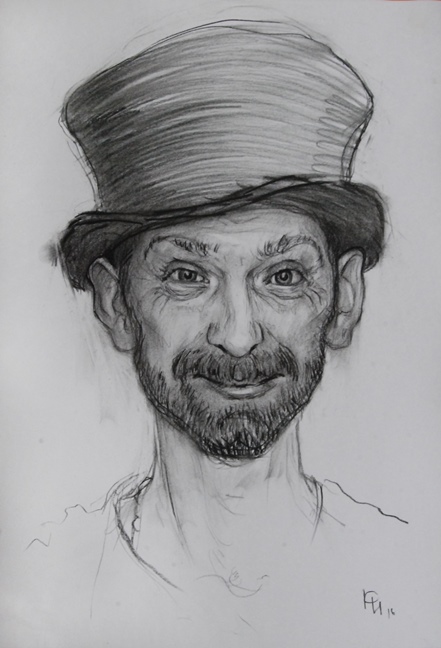

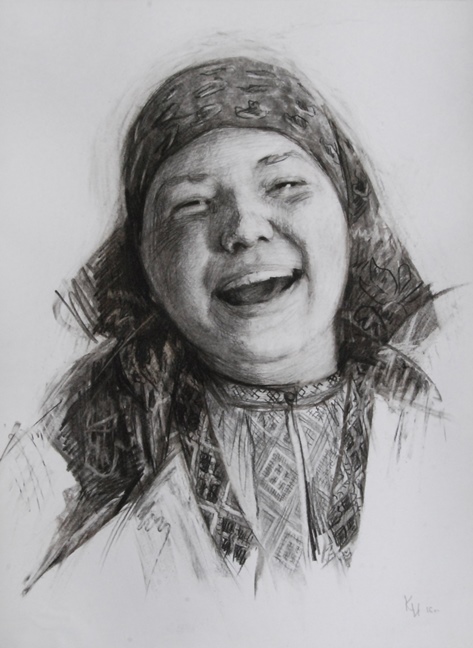

















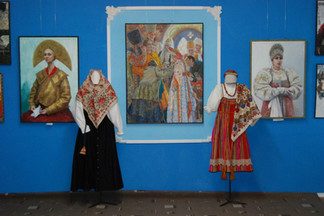



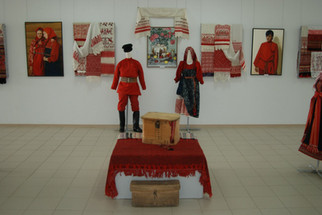





Interesting coverage! I always admire plein air artists as I’ve personally always found it difficult to paint with people surrounding me😅 loved the effects of light in his work